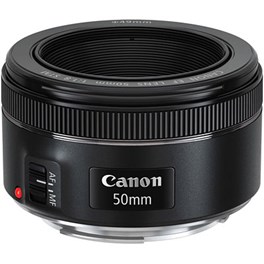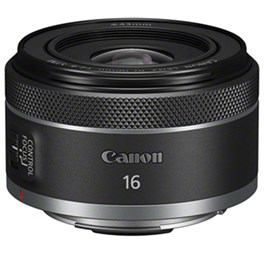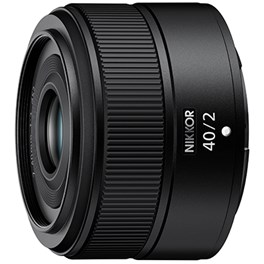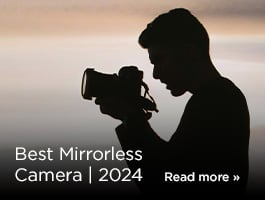
Nothing beats the best prime lenses. While zoom lenses deliver a lot in terms of convenience and versatility, a good prime lens with a fixed focal length is a fantastic way to give yourself a crash course in photographic skills and thinking. A good prime makes you move your feet and engage with the scene in front of you, rather than just twisting the zoom ring.
Then there are also more concrete advantages — prime lenses tend to offer superior optical quality to zoom lenses, and can field larger maximum apertures, giving them an edge in low light. As such, there are plenty of primes designed for professional photographers and videographers, commanding ultra-high price tags. That’s not what we’re counting off here — instead, we’ve aimed to provide a suite of affordable prime lens options for all the major camera systems, including both DSLRs and mirrorless cameras.
This list includes the prime lenses that have impressed us most, from wide-angles to telephotos. All of them offer superb value for money, and some can be picked up incredibly cheaply.
Best DSLR prime lenses
If you’re using a DSLR system, then you’ve no shortage of affordable prime lenses to choose from. Here is a selection of our favourites for Canon, Nikon and Pentax DSLRs, with options for both full-frame and APS-C sensors.
Pros:
- Ultra-slim profile
- Naturalistic 38mm equivalent perspective
- Useful f2.8 aperture
Cons:
- APS-C only
This compact optic is exclusively designed for Canon cameras with APS-C-sized sensors, such as the EOS 760D, EOS 80D and EOS 7D Mark II. With its maximum aperture of f2.8 it’s a great lens for shooting in low light and also allows you to get shallow depth of field, while the close-focusing distance of just 16cm allows you to get up close to your subject.
The effective focal length of around 40mm (in 35mm-equivalent terms) means that it’s an ideal everyday lens to place on your camera for street and documentary work, but it can also be successfully used for landscape and architecture.
Pros:
- Lightweight and portable
- Focal length good for all sorts of situations
- Large maximum aperture
Cons:
- Plastic construction
Perhaps the most famous “nifty fifty” of all time, this brilliant, lightweight and affordable Canon EF lens arguably makes for a better starter lens than the kit zooms that tend to get bundled with beginner DSLRs. Its naturalistic perspective of 50mm makes it a good choice for day-to-day and street photography, producing as it does a field of view similar to that of the human eye.
The lens is also suitable for use on APS-C Canon DSLRs – there, it’ll produce an equivalent focal length of 80mm, which puts portraiture in play. At this price, that’s a brilliant asset to have. No matter which Canon DSLR you’re using, there’s no reason not to pick up this lens and have it at your disposal. It provides absolutely brilliant value for money.
Pros:
- Capable focusing system
- Useful AF/MF switch
- Useful 52mm equivalent focal length
Cons:
- APS-C only
Designed for DX-format Nikon DSLRs, this would be an ideal second lens after your camera’s kit lens. With an effective focal length equivalent to around 52mm on such cameras, the combination approximates the angle of view of the human eye.
The wide maximum aperture of f1.8 means that it’s great for low-light shooting, while the rear-focusing system is said to enable faster focusing than would be otherwise possible (something that’s also helped by the Silent Wave Motor). The M/A switch on the barrel, meanwhile, allows you to override autofocus simply and quickly should you feel the need to.
Pros:
- Brilliantly optimised for portraiture
- Excellent value for money
- Internal focusing system
Cons:
- No stabilisation
For users of full-frame Nikon DSLRs, this affordable lens is the ideal companion to get started with portraiture. Not only is it in the classic portrait-friendly focal length of 85mm — which flatters subjects’ faces without distorting their features, and makes it easy to isolate them from the background — but it also produces beautiful bokeh in the background out-of-focus areas of images, just as you want it to.
Focusing is fast and accurate thanks to the Silent Wave Motor, and the mechanism is entirely internal, meaning the lens doesn’t change size when focusing, helping keep balance consistent. There’s no stabilisation, as you’d expect for a lens at this price, but the wide maximum aperture means you can use fast shutter speeds and freeze movement without issue.
Pros:
- Very affordable
- Close focusing distance
- Suitable for a range of subjects
Cons:
- Not weather-sealed
This budget 35mm lens is designed for Pentax’s APS-C-format cameras, which results in a 35mm-equivalent focal length of around 50mm. A fantastic second lens when you want to complement your kit optic, this effective focal length suits a wide range of subjects including street photography, environmental portraits, food and architecture.
It also has a minimum focusing distance of 30cm, which means that you can get reasonably close to your subject to fill the frame, while the Super Protect coating on the front element promises easier cleaning of any oily or water-based marks.
The lens boasts a wide maximum aperture of f/2.4, which makes it useful in low-light conditions, and also means you can blur backgrounds for beautiful shallow depth-of-field effects.
Pros:
- Tough, splashproof build
- 1:1 macro capabilities and close focusing
- Useful Quick-Shift Focus System
Cons:
- Focusing motor is noisy
A beautiful lens for close-ups, this lens is made for full-frame Pentax DSLRs. It’s a “true” macro lens, meaning it reproduces subjects at life-size on the sensor, with 1:1 magnification. It’s also capable of focusing in close at distances of just 30cm, while eight rounded blades in the diaphragm deliver gorgeous-looking bokeh.
The exterior of the lens is all-metal — it gets Pentax’s “AW” label, meaning “all weather”, certifying its ability to withstand rainfall and dusty environments. There’s also the handy Quick-Shift Focus System, which allows you to switch from auto to manual focusing at a moment’s notice using the physical switch. This is especially useful for close-up photography, where autofocus systems are easily confused and manual can often be more accurate.
Best Mirrorless prime lenses
There are loads of fantastic mirrorless systems out there vying for your attention, and all of them boast a slate of excellent, affordable prime lenses that would make excellent additions to your kit bag. Here are a selection of our favourites, with options for all the major mirrorless systems on the market.
Pros:
- Well-optimised for both photos and video
- Very lightweight
- Impressive image quality for the price
Cons:
- Autofocus is quiet but not silent
Canon’s mirrorless cameras are highly capable hybrids, great for shooting videos and well as stills. Lenses like the RF 16mm f2.8 STM lean into that duality, with a wide field of view that suits vlogging as well as it does general-purpose photography. Weighing in at just 165g, the lens adds virtually nothing to the bulk of a full-frame Canon EOS R camera, and it benefits from both a large maximum aperture and powerful STM motor for autofocus
The focusing system is very quiet, though not completely silent, which is worth bearing in mind for video. Overall though, this lens delivers excellent quality and functionality for the price, and should be high on the list of any multi-faceted content creator using the EOS R system.
Pros:
- Interesting, versatile focal length
- Suited to stills and video
- High-quality images from sophisticated optical design
Cons:
- Not weather sealed
The 40mm focal length of this Nikon lens makes it quite an unusual prospect. A little wider than 50mm, a little tighter than 35mm — it gives you something different to work with, and in practice it’s a lot of fun to use. Ably equipped for both stills and video, this lens for Nikon Z-mount mirrorless cameras benefits from an optical construction that includes two aspherical lens elements.
With a maximum aperture of f2, the lens does well in low light, and bokeh quality in defocused areas is pleasing. You can also use it on DX-format Z-mount cameras like the Z50 or Z30, where it will deliver an equivalent focal length of 60mm.
Pros:
- Gorgeously smooth, rounded bokeh
- Textured aperture ring
- Great level of weather sealing
Cons:
- Not many at this price!
Doubling up as our pick for both full-frame Sony and full-frame L-mount cameras, this high-quality Sigma lens. It carries the “Art” designation, denoting Sigma’s lenses that are designed to provide the ultimate in creative expression. As such, it’s a lens that comes into its own when used to create images with a shallow depth of field, producing a pleasing level of separation between subject and background, with wonderful circular bokeh in the background.
A good 35mm lens can be an all-purpose Swiss Army knife in the right hands, and this one is a premium example of the genre. If you’re using a full-frame Sony or L-mount camera, this is definitely a prime to prioritise adding to your kit bag.
Pros:
- Ultra-slim profile
- Broadly useful 24mm equivalent focal length
Cons:
- APS-C only
This simple, low-profile lens is ideal for keeping the overall system size of your camera down when you want to travel light. It features a seven-bladed diaphragm and an f2.8 maximum aperture, and is a good choice for shooting in low light or whenever shallow depth-of-field is required.
Designed for APS-C format, E-mount cameras, the combination providing a 35mm-equivalent focal length of around 24mm, the lens can be used for a wide range of subjects including landscapes, street photography, food and still life.
Pros:
- Weather-resistant build
- Nine-bladed diaphragm delivers excellent bokeh
- Close-focusing distance of 22cm
Cons:
- Some visible vignetting
Nice and lightweight, this is an agile prime (35mm equivalent) that pairs well with Fujifilm’s X-mount mirrorless cameras. Its weather-resistant build makes it an excellent choice for outdoor photography and videography, and with a close focusing distance of just 22cm, you can get nice and close to your subjects to fill the frame. With a nine-bladed diaphragm, the lens does well when used at its maximum aperture, and even though f2 isn’t quite the same as f1.8 or f1.4, it’s pretty darn close.
The lens does exhibit some vignetting at wider apertures, though not enough to seriously compromise your imagery. It’s an enjoyable lens to use, available at an affordable price, and would suit anyone looking to expand their portfolio of X-mount lenses without breaking the bank.
Pros:
- Incredibly slim and lightweight
- Doubles up as a body cap
- Wide perspective
Cons:
- Manual focus only
Weighing just 30g and measuring only 12.8mm deep, you almost don’t notice this lens when mounted on your camera. Additionally, it keeps the sensor protected when not in use, in the same way a standard body cap would.
This simple, manual-focus-only lens has a fixed aperture of f/8, although this makes it suitable for street work where you want to have everything in focus. This, together with an effective focal length of 18mm on Olympus and Panasonic Micro Four Thirds bodies (in 35mm-equivalent terms) means that it can also be used successfully for landscape photography.
It boasts a minimum focusing distance of just 20cm, while the manual-focus lever lets you easily switch between distant and close-up focus.
Pros:
- Stylish looks
- 50mm equivalent focal length
- Budget-friendly price
Cons:
- Some softness at widest apertures
Available in black and silver finishes, this affordable lens has been designed to function as a 50mm lens on a Micro Four Thirds body, with its wide aperture allowing for blurred backgrounds to be easily created.
The barrel sports a deep and tactile focusing ring while the optics inside include one Ultra-High Refractive Index and two aspherical elements to counter aberrations. There’s also the seven-bladed, rounded diaphragm for circular bokeh, so it’s bound to appeal to portrait shooters.

FAQs
What is a prime lens and why should I use one?
A prime lens is a camera lens with a fixed focal length, meaning it does not zoom in or out. Prime lenses typically offer sharper images, wider apertures for better low-light performance, and a shallower depth of field for beautiful background blur.
Are prime lenses better than zoom lenses?
Prime lenses are not necessarily better than zoom lenses, but they offer different advantages and force you to think differently about the shots you take. Prime lenses usually provide superior image quality, larger apertures for low-light shooting, and more background blur. However, zoom lenses offer flexibility with varying focal lengths in one lens.
What are the best uses for prime lenses?
Prime lenses are ideal for portrait photography, as their wide apertures create a pleasing background blur that makes subjects stand out. They are also great for low-light situations, street photography, and capturing sharp, detailed images.
How do I choose the right prime lens for my camera?
If you shoot portraits, look for a lens with a wide aperture for beautiful background blur. For landscape photography, a wider focal length is better. Check compatibility with your camera’s brand and mount type and consider your budget and what focal length will best suit your style and needs.
Why do prime lenses have wider apertures?
Prime lenses often have wider apertures because they have fewer moving parts than zoom lenses. This allows more light to enter the lens, making them great for low-light conditions. Wider apertures also create a shallower depth of field, which helps achieve that desirable bokeh blur.
How do we decide?
Our in-house photography experts, store staff and partners all work collaboratively to pour over our guides and tips articles. We also consider emerging trends and customer feedback to make sure our guides are always up-to-date and reflective of what people are truly looking for. By curating only the best products, our guides provide trustworthy recommendations, making it easier for customers to make informed choices with confidence.
If you would like more advice on any purchase our contact centre staff are here to help. Alternatively, you can reach us via email or social media. And don't forget. If you were to purchase anything based on our recommendations you'll be covered by our full returns policy
Sign up for our newsletter today!
- Subscribe for exclusive discounts and special offers
- Receive our monthly content roundups
- Get the latest news and know-how from our experts





















